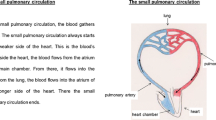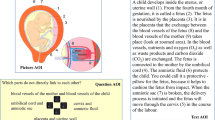Abstract
In two experiments, we compared effects of instructions that encourage learners to create referential connections between words and pictures with instructions that distract learners from creating referential connections. In Experiment 1, students read a scientific text under four conditions. In the text-picture condition, students read the illustrated text without strategy instructions. In the integration condition, students identified important concepts and wrote them right by the corresponding components of the pictures. In the separation condition students identified important concepts and wrote them beside the corresponding picture. A control group read the text without illustrations. Transfer and comprehension performance in the text-picture group was higher than in the text-only group. Furthermore, the text-picture and integration groups performed better than the separation group. In Experiment 2, the main results were replicated using a summary strategy instead of the important concepts strategy. Results indicate specific effects of strategy instructions on learning from text and pictures and are discussed in the context of multimedia learning theories.


Similar content being viewed by others
Notes
Despite the missing values the scores on the referential connections test were significantly correlated—similar to Experiment 1—with performance on the comprehension test, r = .50, p = .007 (n = 28), and with performance on the transfer test, r = .48, p = .012 (n = 27).
References
Ayres, P., & Sweller, J. (2005). The split-attention principle in multimedia learning. In R. E. Mayer (Ed.), The Cambridge handbook of multimedia learning (pp. 134–146). New York: Cambridge University Press.
Bartholomé, T., & Bromme, R. (2009). Coherence formation when learning from text and pictures: what kind of support for whom? Journal of Educational Psychology, 101, 282–293. doi:10.1037/a0014312.
Bodemer, D., & Faust, U. (2006). External and mental referencing of multiple representations. Computers in Human Behavior, 22, 27–42.
Bodemer, D., Plötzner, R., Bruchmüller, K., & Häcker, S. (2005). Supporting learning with interactive multimedia through active integration of representations. Instructional Science, 33, 73–95. doi:10.1007/s11251-004-7685-z.
Bodemer, D., Plötzner, R., Feuerlein, I., & Spada, H. (2004). The active integration of information during learning with dynamic and interactive visualizations. Learning and Instruction, 14, 325–342. doi:10.1016/j.learninstruc.2004.06.006.
Brünken, R., Seufert, T., & Zander, S. (2005). Förderung der Kohärenzbildung beim Lernen mit multiplen Repräsentationen [Fostering coherence formation inlearning from multiple representations]. Zeitschrift für Pädagogische Psychologie, 19, 61–75. doi:10.1024/1010-0652.19.12.61.
Butcher, K. R. (2006). Learning from text with diagrams: Promoting mental model development and inference generation. Journal of Educational Psychology, 98, 182–197. doi:10.1037/0022-0663.98.1.182.
Carney, R. N., & Levin, J. R. (2002). Pictorial illustrations still improve students’ learning from text. Educational Psychology Review, 14, 5–26.
Chandler, P., & Sweller, J. (1991). Cognitive load theory and the format of instruction. Cognition and Instruction, 8, 293–332. doi:10.1207/s1532690xci0804_2.
Chandler, P., & Sweller, J. (1992). The split-attention effect as a factor in the design of instruction. British Journal of Educational Psychology, 62, 233–246. doi:10.1111/j.2044-8279.1992.tb01017.x.
Ekstrom, R. B., French, J. W., Harman, H. H., & Dermen, D. (1976). Manual for kit of factor-referenced cognitive tests. Princeton, NJ: Educational Testing Service.
Florax, M., & Ploetzner, R. (2010). What contributes to the split-attention effect? The role of text segmentation, picture labelling, and spatial proximity. Learning and Instruction, 20, 216–224.
Hall, V. C., Bailey, J., & Tillman, C. (1997). Can student-generated illustrations be worth ten thousand words? Journal of Educational Psychology, 89, 667–681. doi:10.1037/0022-0663.89.4.677.
Hayes, A. F. (2009). Beyond Baron and Kenny: Statistical mediation analysis in the new millennium. Communication Monographs, 76, 408–420.
Hayes, A. F. (2013). Introduction to mediation, moderation and conditional process analysis. New York: Guilford Press.
Hegarty, M., & Just, M. A. (1993). Constructing mental models of machines from text and diagrams. Journal of Memory and Language, 32, 717–742.
Heller, K. A., & Perleth, C. (2000). Kognitiver Fähigkeitstest für 4.-12. Klassen, Revision [Cognitive ability test for grades 4–12, revised version]. Göttingen, Germany: Hogrefe.
Höffler, T. N. (2010). Spatial ability: Its influence on learning with visualizations—a meta-analytic review. Educational Psychology Review, 22, 245–269. doi:10.1007/s10648-010-9126-7.
Kulhavy, R. M., Stock, W. A., & Caterino, L. C. (1994). Reference maps as a framework for remembering text. In W. Schnotz & R. W. Kulhavy (Eds.), Comprehension of graphics (pp. 153–162). Amsterdam: Elsevier.
Larkin, J. H., & Simon, H. A. (1987). Why a diagram is (sometimes) worth ten thousand words. Cognitive Science, 11, 65–99.
Leopold, C., & Leutner, D. (2012). Science text comprehension: Drawing, main idea selection, and summarizing as learning strategies. Learning and Instruction, 22, 16–26. doi:10.1016/j.learninstruc.2011.05.005.
Leopold, C., Sumfleth, E., & Leutner, D. (2013). Learning with summaries: Effects of representation mode and type of learning activity on comprehension and transfer. Learning and Instruction, 27, 40–49.
Leutner, D., Leopold, C., & Sumfleth, E. (2009). Cognitive load and science text comprehension: Effects of drawing and mentally imagining text content. Computers in Human Behavior, 25, 284–289. doi:10.1016/j.chb.2008.12.010.
MacKinnon, D. P. (2008). Introduction to statistical mediation analysis. New York, NY: Erlbaum.
MacKinnon, D. P., Krull, J. L., & Lockwood, C. M. (2000). Equivalence of the mediation, confounding and suppression effect. Prevention Science, 1, 173–181.
MacKinnon, D. P., Lockwood, C. M., Hoffman, J. M., West, S. G., & Sheets, V. (2002). A comparison of methods to test mediation and other intervening variable effects. Psychological Methods, 7, 83–104.
Mayer, R. E. (2009). Multimedia learning (2nd ed.). New York: Cambridge University Press.
Mayer, R. E., & Sims, V. K. (1994). For whom is a picture worth ten thousand words? Extensions of a dual coding theory of multimedia learning. Journal of Educational Psychology, 86, 389–401. doi:10.1037/0022-0663.86.3.389.
Mayer, R. E., Steinhoff, K., Bower, G., & Mars, R. (1995). A generative theory of textbook design: Using annotated illustrations to foster meaningful learning of science text. Educational Technology Research and Development, 43, 31–43.
Paivio, A. (1986). Mental representations: A dual-coding approach. Oxford: Oxford University Press.
Ploetzner, R., Lowe, R., & Schlag, S. (2013). Systematic characterization of cognitive techniques for learning from textual and pictorial representations. Journal of Education and Learning, 2, 78–95.
Rosenthal, R., & Rosnow, R. L. (1985). Contrast analysis: Focused comparisons in the analysis of variance. Cambridge: Cambridge University Press.
Schnotz, W., & Bannert, M. (2003). Construction and interference in learning from multiple representations. Learning and Instruction, 13, 141–156. doi:10.1016/S0959-4752(02)00017-8.
Schwamborn, A., Thillmann, H., Leopold, C., Sumfleth, E., & Leutner, D. (2010). Der Einsatz von vorgegebenen und selbst generierten Bildern als Textverstehenshilfe beim Lernen aus einem naturwissenschaftlichen Sachtext [Presented and self-generated pictures as aids in comprehending scientific text]. Zeitschrift für Pädagogische Psychologie, 24, 221–233.
Schwartz, N. H., & Kulhavy, R. W. (1981). Map features and the recall of discourse. Contemporary Educational Psychology, 6, 151–158.
Seufert, T. (2003). Supporting coherence formation in learning from multiple representations. Learning and Instruction, 13, 227–237. doi:10.1016/S0959-4752(02)00022-1.
Seufert, T., Jänen, I., & Brünken, R. (2007). The impact of intrinsic cognitive load on the effectiveness of graphical help for coherence formation. Computers in Human Behavior, 23, 1055–1071. doi:10.1016/j.chb.2006.10.002.
Sobel, M. E. (1982). Asymptotic confidence intervals for indirect effects in structural equation models. In S. Leinhardt (Ed.), Sociological methodology (pp. 290–312). Washington, DC: American Sociological Association.
Van Meter, P. (2001). Drawing construction as a strategy for learning from text. Journal of Educational Psychology, 93, 129–140. doi:10.1037/0022-0663.93.1.129.
Verdi, M. P., & Kulhavy, R. W. (2002). Learning with maps and texts: An overview. Educational Psychology Review, 14, 27–46. doi:10.1023/A:1013128426099.
Acknowledgments
Experiment 2 was supported by a grant from the German Research Foundation to the first author.
Author information
Authors and Affiliations
Corresponding author
Rights and permissions
About this article
Cite this article
Leopold, C., Doerner, M., Leutner, D. et al. Effects of strategy instructions on learning from text and pictures. Instr Sci 43, 345–364 (2015). https://doi.org/10.1007/s11251-014-9336-3
Received:
Accepted:
Published:
Issue Date:
DOI: https://doi.org/10.1007/s11251-014-9336-3




